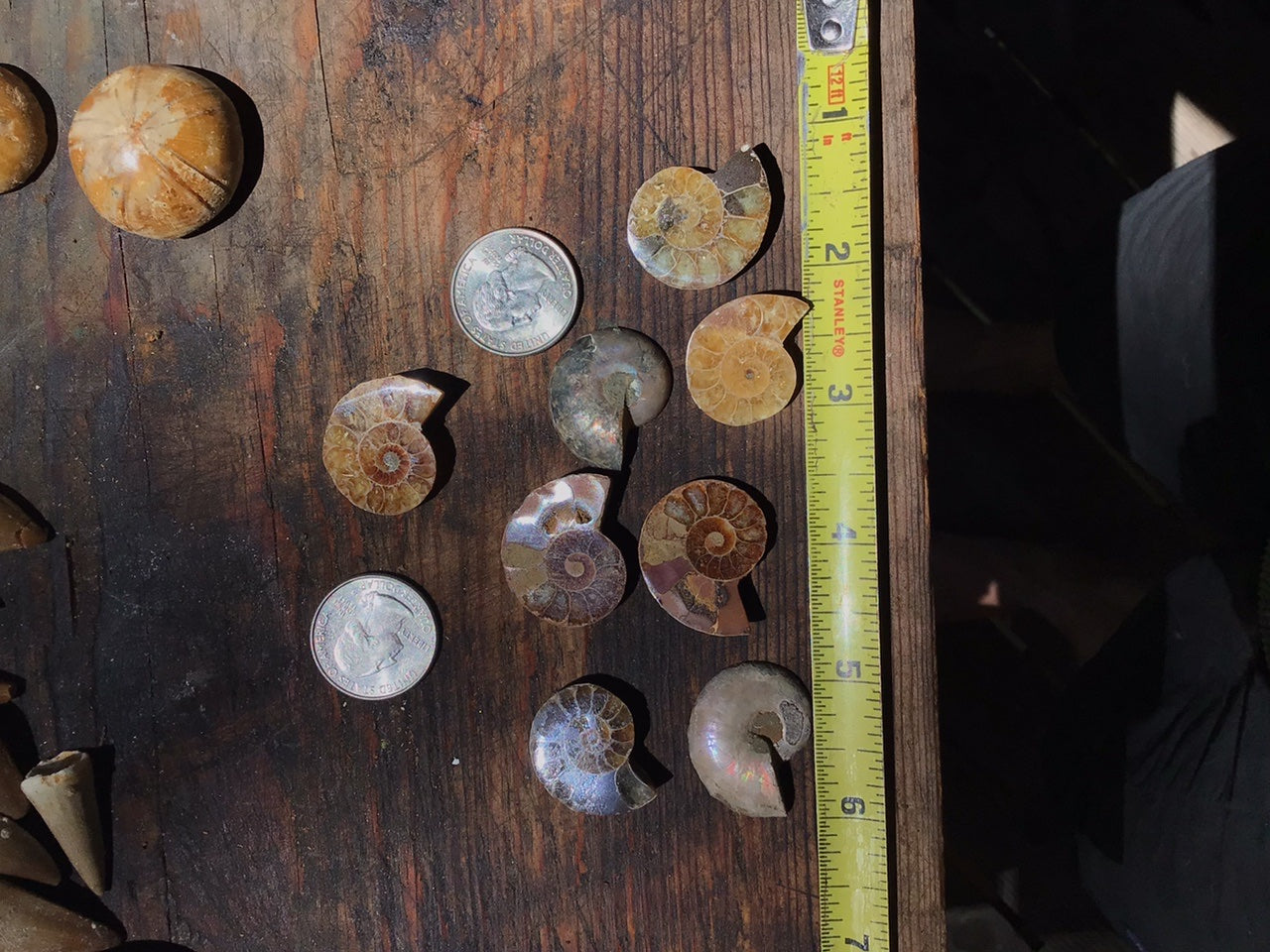1
/
of
7
Montana Survival Seed
Ammonite
Ammonite
Regular price
$10.00 USD
Regular price
Sale price
$10.00 USD
Shipping calculated at checkout.
Quantity
Couldn't load pickup availability
AMMONITE
Approx. 1,200 species
0.5 inches to 6 feet
Ammonite = Egyptian God Amun and the ram’s horn on head
Ammonites are cephalopods similar to squid and related to the Nautilus. They had up to 10 tentacles, powerful eyesight, syphon pump to allow locomotion and buoyancy, strong beak for crushing food, ink sacks for defense, ornate/beautiful coloration within its hard spiral shell, and many air chambers. They lived in varying ocean depths and were a main food source for the Mosasaur. They lived during the Jurassic and Cretaceous periods (250-65 MYA), and passed on into memory along with the Dinosaurs and others during the K-T mass extinction event.
Some of their food sources were small fish, ocean floor creatures, and whatever they could likely scavenge during their travels. Researchers believe they were like the Salmon laying a crap ton of eggs at the end of their life cycle, and females were likely larger than the males. Ammonites are among my favorite fossils b/c of their beautiful natural patterns and also b/c they are ancestors to the octopus. Hope yall enjoy these.
Approx. 1,200 species
0.5 inches to 6 feet
Ammonite = Egyptian God Amun and the ram’s horn on head
Ammonites are cephalopods similar to squid and related to the Nautilus. They had up to 10 tentacles, powerful eyesight, syphon pump to allow locomotion and buoyancy, strong beak for crushing food, ink sacks for defense, ornate/beautiful coloration within its hard spiral shell, and many air chambers. They lived in varying ocean depths and were a main food source for the Mosasaur. They lived during the Jurassic and Cretaceous periods (250-65 MYA), and passed on into memory along with the Dinosaurs and others during the K-T mass extinction event.
Some of their food sources were small fish, ocean floor creatures, and whatever they could likely scavenge during their travels. Researchers believe they were like the Salmon laying a crap ton of eggs at the end of their life cycle, and females were likely larger than the males. Ammonites are among my favorite fossils b/c of their beautiful natural patterns and also b/c they are ancestors to the octopus. Hope yall enjoy these.














